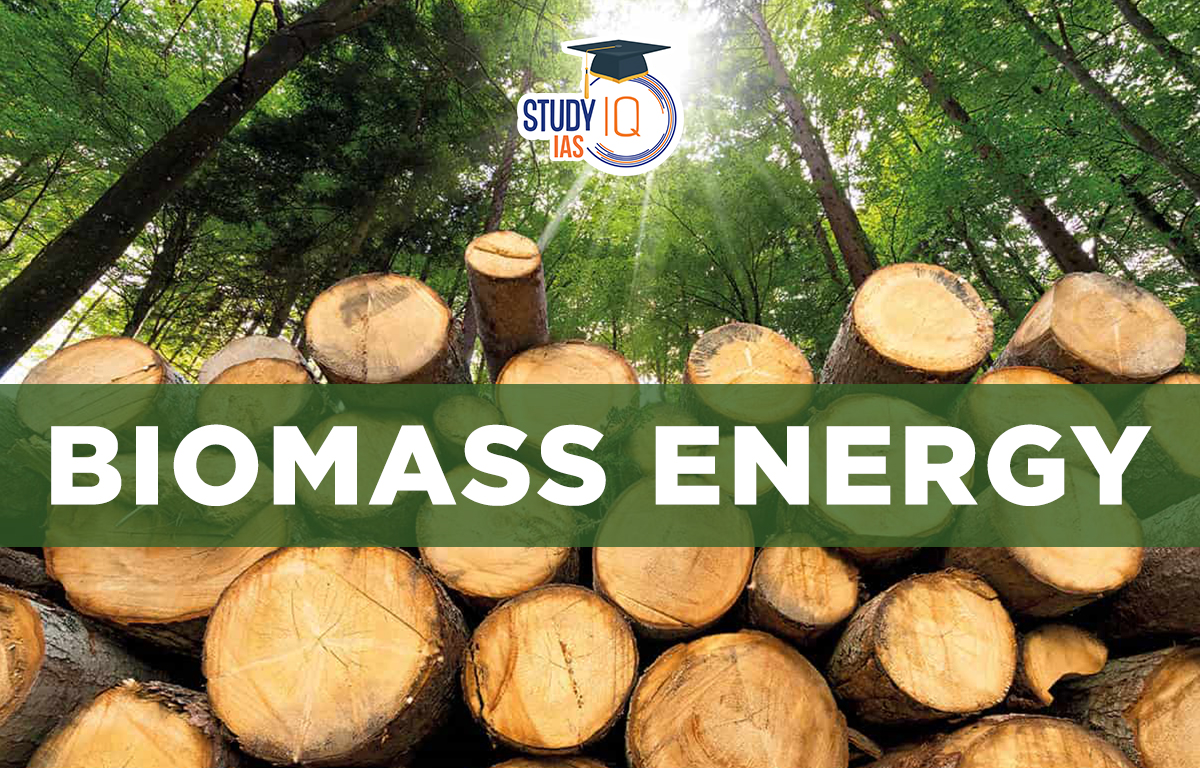Table of Contents
Biomass Energy
Any organic material that has stored sunlight in the form of chemical energy is referred to as biomass. Biomass energy refers to energy produced or generated by living or extinct organisms. Agricultural by-products such as wood, wood debris, straw, manure, sugarcane, etc. can be used as fuel. Biomass sources other than agricultural byproducts include industrial residues, animal residues, municipal solid waste, sewage, and forestry residues. Given its advantages, biomass has traditionally been a significant source of energy for the nation.
It’s carbon-neutral, plentiful, and renewable, which means it can create many jobs in rural areas. Biomass also provides reliable energy. Different materials like bagasse, rice husks, straw, cotton stalks, coconut shells, soy husks, leftover cakes, coffee waste, jute, peanut shells, and sawdust can be used to make electricity.
Read about: Hydropower Plants in India
Biomass Energy Sources
- Among the Biomass Energy sources include wood and waste products from wood processing, such as firewood, wood pellets, and wood chips, as well as sawdust and waste products from furniture and lumber mills and trash from pulp and paper mills.
- Corn, soybeans, sugar cane, switchgrass, woody plants, algae, and crop and food processing wastes are examples of agricultural crops and waste products.
- Biogenic materials in municipal solid waste, including food, yard and wood wastes, cotton, wool, and paper goods.
- Human sewage and animal manure.
Read More: Minerals
Biomass Energy Potential
India has plenty of sunshine and rain, making it a great place for growing biomass. The country also produces a lot of agricultural waste, which can be used for energy. Every year, around 460 million tonnes of agricultural waste is generated, and this biomass can replace about 260 million tonnes of coal. This switch could save about Rs. 250 billion each year.
| Type of Agro residues | Quantity(Million Tonnes / annum) |
|---|---|
| Straws of various pulses & cereals | 225.50 |
| Bagasse | 31.00 |
| Rice Husk | 10.00 |
| Groundnut Shell | 11.10 |
| Stalks | 02.00 |
| Various Oil Stalks | 04.50 |
| Others | 65.90 |
| Total | 350.00 |
The estimated potentials for Biomass-based renewable energy in India are as follows
| Biomass Energy | 16000 MW |
| Bagasse Co-Generation | 3500 MW |
| Total | 19500 MW |
Read about: Nuclear Power Plants in India
Biomass Energy Significance
- The leftover material from biogas plants is a valuable natural fertilizer that helps farmers use less chemical fertilizer. It is carbon-neutral as the carbon released is balanced by what plants absorb during their lives.
- Biomass fuels can reduce our reliance on fossil fuels, which are limited and harmful due to high carbon emissions and pollution from extraction.
- Biomass technology is more affordable than fossil fuels because it does not need costly investments like oil drilling or gas pipelines, allowing farmers to earn more with smaller operations.
Read More: Cobalt Ore
Biomass Energy Challenges
- Burning large amounts of wood and waste for biomass energy can lead to deforestation.
- Even though there is enough wood debris now, future deforestation is possible.
- Biomass energy is less efficient than fossil fuels; some biofuels like ethanol are weaker than gasoline and need fossil fuels to work better.
- Using animal and human waste for biomass increases methane gases, which are harmful to the environment.
- Burning wood, plants, and other natural resources for biomass can cause pollution similar to burning coal.
- Building biomass power plants is expensive because it needs more storage, shipping, and harvesting compared to other renewable energy sources like solar power.
Read More: Iron Ore
Biomass Energy UPSC
- India has a significant potential for the production of bioenergy because it can produce over 750 million metric tonnes of biomass annually.
- Since the 1980s, India’s Ministry of New and Renewable Energy has promoted bioenergy as a way to utilise the surplus biomass, cow dung, industrial, and municipal biowaste that is produced there.
- The advantages of using extra biomass should trickle down to rural households through an additional source of revenue for farmers.
- The requirement at the time was to give inclusion an extra push by increasing the usual CFA (central financial aid) pattern for the northeastern area and Gaushala/shelter by 20%.
- As a result, it will generally support national commitments to attaining climate change targets, coupled with a decrease in the import of natural gas and crude oil, and provide as a safety net for changes in the price of crude oil and gas.


 Story of Meera Bai and Her Devotion For ...
Story of Meera Bai and Her Devotion For ...
 Desert Climate, Distribution, Climatic C...
Desert Climate, Distribution, Climatic C...
 Deserts of India Map, Features of Thar D...
Deserts of India Map, Features of Thar D...





















